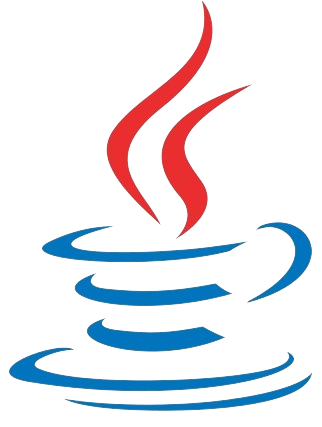TECHNICAL
- Home
- Technologies
Development
We are utilizing a range of modern technologies to create a dynamic and efficient application. JavaScript serves as the core language for implementing interactive features, while React is employed for building reusable UI components and managing the application’s state. Redux is used alongside React to ensure predictable state management. For styling, we rely on CSS and SCSS to achieve a responsive and visually appealing design. HTML forms the structural backbone of our web content. Additionally, on the server side, Node.js and Express are used to handle server-side scripting and to build scalable network applications and RESTful APIs, respectively.
Cloud Computing
Cloud computing enables users to access and use computing resources, such as servers, storage, and applications, over the internet rather than relying on local infrastructure. This approach offers significant advantages, including cost savings through a pay-as-you-go model and the ability to scale resources dynamically to meet changing demands. Moreover, cloud computing enhances flexibility and collaboration, allowing multiple users to access shared data and applications from any location with an internet connection. These benefits make cloud computing an essential technology for modern businesses and individuals.
Development
We are utilizing a range of modern technologies to create a dynamic and efficient application. JavaScript serves as the core language for implementing interactive features, while React is employed for building reusable UI components and managing the application's state. Redux is used alongside React to ensure predictable state management. For styling, we rely on CSS and SCSS to achieve a responsive and visually appealing design. HTML forms the structural backbone of our web content. Additionally, on the server side, Node.js and Express are used to handle server-side scripting and to build scalable network applications and RESTful APIs, respectively.
Amazon Web Services
Microsoft Azure
Operations Toolkit

Azure Vm

Azure Storage

Azure SQL Database

Kubernetes Services

Container Services

Cost Optimization

Azure Automation

Azure Migrate

Cloud Defender for Azure

Azure Sentienals

Azure Monitor

Azure Vm

Log Analytics

SQS

CodeDeploy

EKS

CodePipeline

ECS

DMS

ECR

IAM

Dynamo DB

CloudWatch

Beanstalk

Elasti Cache

Lightsail

VPC

WorkSpace

Kubernates

Docker

Powershell

CLI

Git

GitLab

Jenkins

PostgraSQL

MySQL

Apache

Nginx

IIS

TomcatL

Redis

Java

PHP
Front-end Development
Back-end Development
Mobile-app Development

HTML/CSS

Tailwind

React.js

Vue.js

Backbone.js

Angular.js

Bootstrap

SASS

WebPack

.NET

Python

Ruby

C++

Node.js

PHP

Swift

Kotlin

Flutter

Objective-C

Java

React Native

WHY CHOOSE US
We Have Years Of Experience In Infrastructure, Cloud, and Development Services
Incluid means partnering with a team that is dedicated to your success, values your business, and is committed to delivering excellence. When you choose to work with us, you’re not just hiring a service provider; you’re gaining a partner who is genuinely invested in your achievements. Our team is composed of highly skilled professionals who are passionate about what they do and are always striving to exceed expectations. We take the time to understand your unique needs and tailor our solutions to meet them, ensuring that every aspect of our work aligns with your vision and goals.
Comprehensive Solutions
Our strategies and approaches address multiple aspects and facets to cater your Cloud based Infrastructure.
Personalized Service
Incluid optimizing existing IT Systems, security measures, cloud-based or anything related to IT Infrastructure.
24/7 Support
Incluid specialized team offers its customers assistance 24/7. Our team is always available to assist clients with their queries and offer them support on their requests.
Leave a Message For Us
We value your feedback and inquiries. Please leave us a message, and we will get back to you as soon as possible.
FAQ
Full-stack develop means using the coding language at the front end and also at the back end which is the server side or the client side of the application. A full-stack developer possesses skills in both fronts: the side that is most recognizable to the public or the client-side of the application and the back end or server side of the application.
The three layers of full-stack development typically refer to:
- Presentation layer (Front-end): This layer deals with the graphical user interface and the way a user interfaces with the said application. HTML, CSS, JavaScript or specific frameworks such as React, Angular or Vue are part of the front-end technologies. js.
- Business logic layer (Back-end): This layer deals with the application’s, functions and operations as well as managing the database. It comprises tools such as Node. JS, Python [Django, Flask], Ruby[Rails], MySQL, postgres, MongoDB.
- Database layer: This layer includes databases which store the information and administer it. Such as MySQL, PostgreSQL, and NoSQL like MongoDB.
Skills required for a full stack developer typically include:
- Front-end technologies: html, css, Javascript, frameworks and libraries; react, angular, vue. js.
- Back-end technologies: Node. ASP, PHP, Perl, Python, Ruby, Java, and . NET, PHP, etc.
- Database management: relational databases SQL (MySQL, PostreSQL) and NoSQL (MongoDB, Redi).
- Systems that allow maintaining version control such as Git.
- Understanding of web servers, Hypertext Transfer Protocol, Representation State Transfer application program interface.
- The participants’ perception of security issues and procedures.
- Infrastructure competencies in deployment and server running.
The four types of cloud computing deployment models are:
- Public cloud: Services are run and accessed over the regular Internet and utilize multiple organizations infrastructures (e. g., AWS, Azure, Google Cloud).
- Private cloud: It is a private type that belongs to a organization or company and has more facilities and security compared to others (for ex: VMware, OpenStack).
- Hybrid cloud: A type of hybrid that enables a certain level of data and application transfer between the public and private clouds, for example, using both AWS and company’s servers.
- Community cloud: Integration into existing structures of several organizations with similar problems (for example, several universities with a cloud for research).
Examples of cloud computing services include:
- Infrastructure as a Service (IaaS): AWS EC2 instance, Google Compute Engines.
- Platform as a Service (PaaS): Among the cloud-based solutions, there are Heroku, Google App Engine.
- Software as a Service (SaaS): Google apps, MS office online services, Google Workspace, and Microsoft Office 365.
- Function as a Service (FaaS): AWS Lambda, Azure Functions.
Cloud computing is given the name, because it refer to the internet commonly illustrated as a cloud, where the computation resources and services like servers, storage, database, networking software and so on are provided and used over the internet. It provides the ability to use computing services with no need of micro-managing infrastructures that are needed to support the services.
Featured on:








